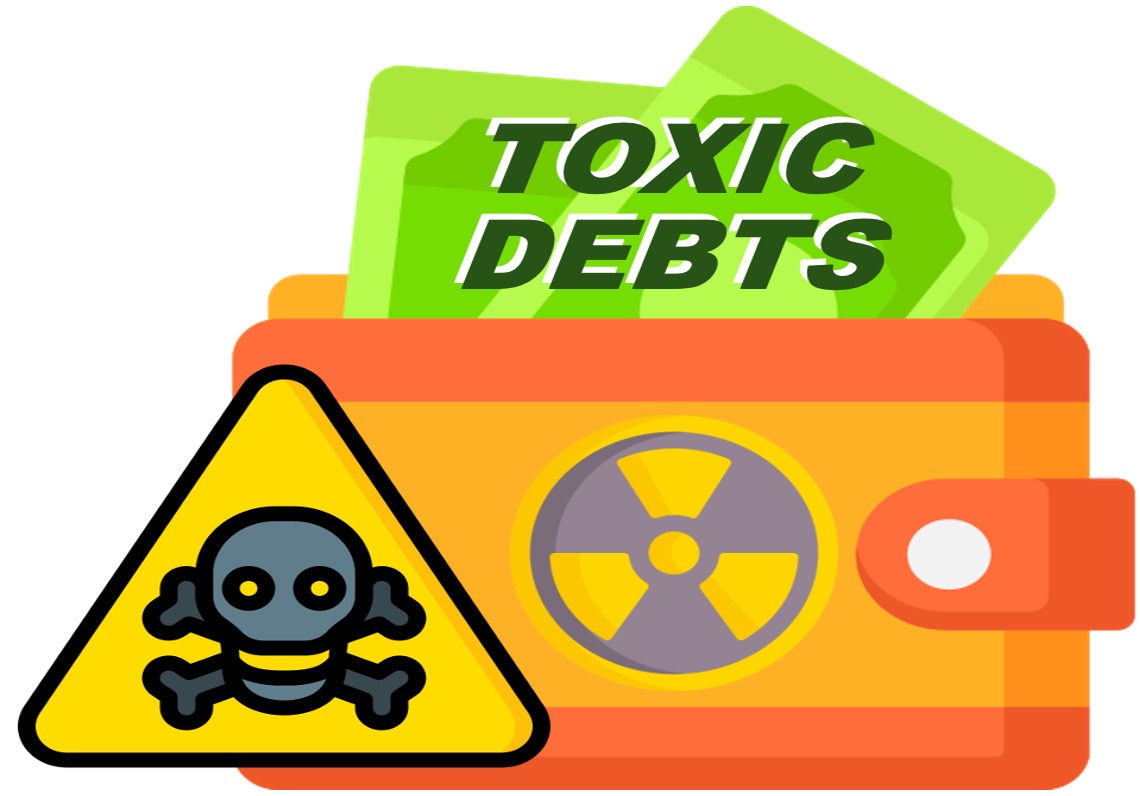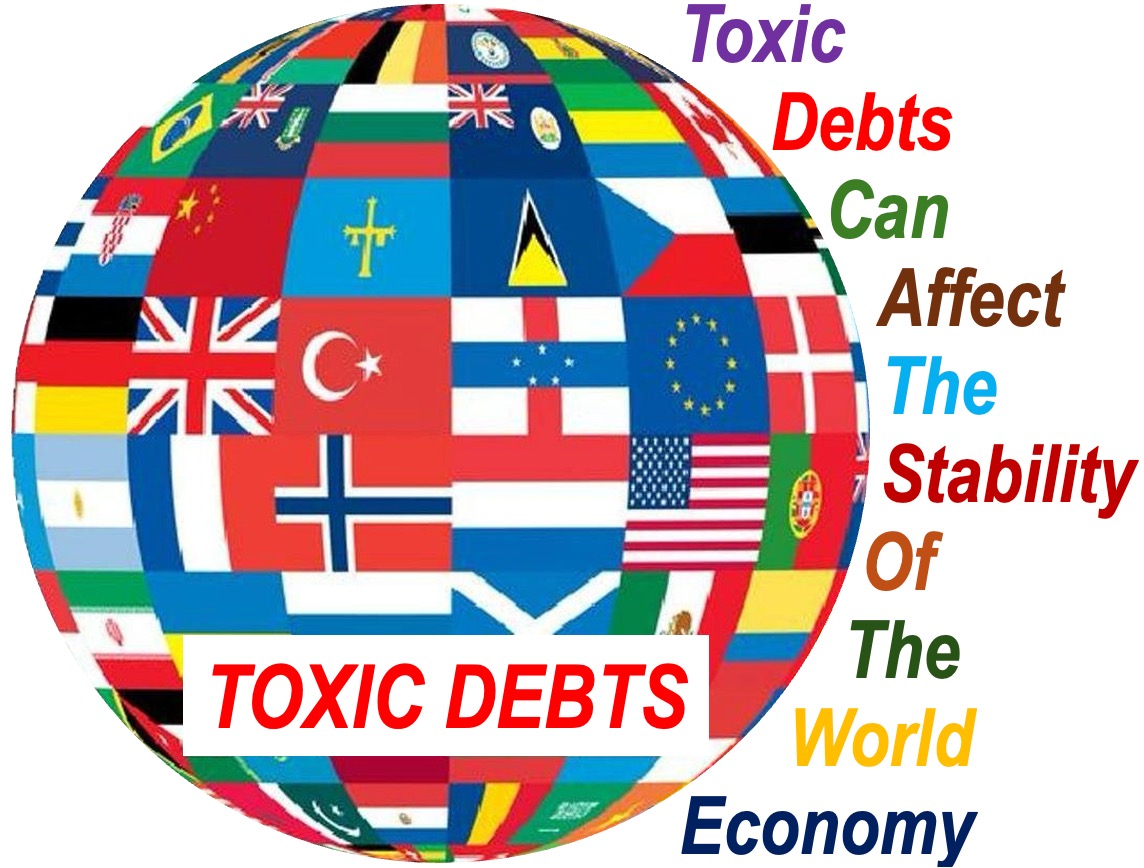Toxic debts, also known as bad loans or toxic assets, are debts that are not likely to be paid back by the borrowers to the lenders.
Essentially toxic debts are a class of assets that were once of value (or were believed to hold value), but are now worthless or nearly completely worthless.
2008 Global Financial Crisis
The term was commonly used during 2008 financial crisis, where they played a major role in sparking and exacerbating the turmoil.
In the financial crisis these types of debts were almost impossible to sell or value because the markets for them had ceased to function.
An asset is seen as a toxic debt when its value significantly dips in price, which can be very dangerous to the holder.

Toxic debts and high-risk borrowers
The term was originally used to refer to loans that were backed by property that were given to people who were extremely high risk and did not have the money to repay their debt. Banks were actively giving loans to people who were not in a financial position to pay their off mortgages – these are known as subprime mortgages.
These toxic debts were “packaged up” by the banks that lent the money into a bundle of other loans and then sold off to other banks in the form of Collateralised Debt Obligations (CDOs).
When the property market boomed and house prices were going up and up, the CDO market surged. Banks worldwide acquired these CDOs, only to find out that they were actually worthless.
Several banks in Europe and the US were so heavily laden with toxic debts that they had to be bailed out by the taxpayer. The Royal Bank of Scotland, one of the bailed-out banks, is still suffering as a consequence.

Toxic debts and investor confidence
Toxic debts have a profound effect on the confidence in the banking sector. Some people refer to it as ‘corporate gambling’.
The Nasdaq Business Glossary says the following about toxic assets:
“In the context of the 2007-2009 recession, the term refers to assets like mortgage backed securities and collateralized debt obligations that are illiquid and difficult to value. If the value of the underlying assets falls significantly, these securities could lose value rapidly (aggravated by the lack of liquidity and transparency in price) which could lead to significant write-downs (and hence losses) for holders of these toxic assets.”
Video – What are Toxic Debts?
This video, from our sister YouTube Channel – Marketing Business Network – explains what “Toxic Debts” are using easy-to-understand language and examples:
